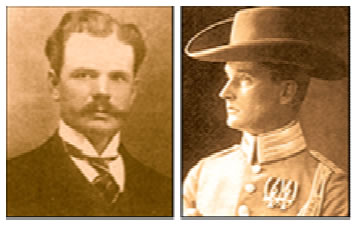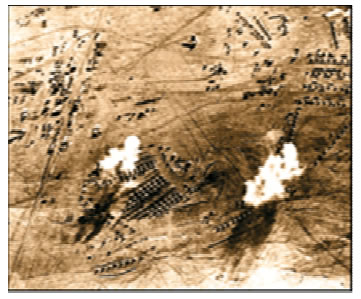The Origins of the Wild Horses of the Namib
Wednesday, 8th March 2006
Gondwana Desert Collection - Media Release 08/03/2006
To this day there has been much speculation and debate about the origins of the Wild Horses. There is agreement only on one point: they are not indigenous, because originally there never were horses in southern Africa.
They only started to appear in the region from the 17th century onwards, imported by Europeans. Therefore the Wild Horses of the Namib are the descendants of domesticated animals which - similar to the mustangs of North America - have adopted a feral existence.
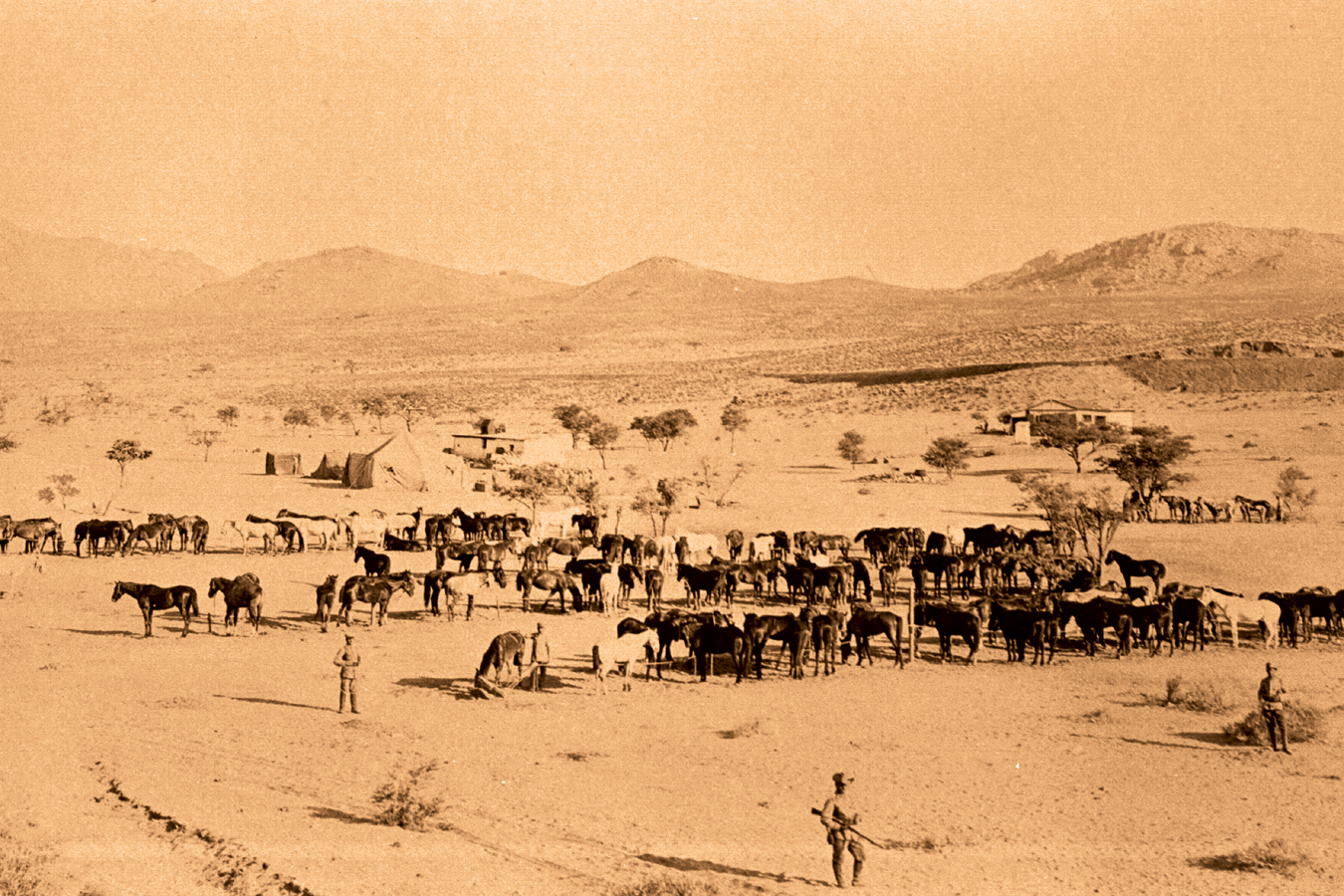
Horses of the German colonial forces near Aus. Source: National Archive of Namibia
But how come did domesticated horses stray into this area? And how did it happen that they turned feral? Some theories point to a ship with a cargo of horses and other domestic animals which was wrecked about 25 km south of the Orange River mouth, roughly 200 km from Garub, in the late 19th century. Others refer to the stud farm at Duwisib owned by Hansheinrich von Wolf - about 250 km north-east of Garub. However, a farm manager was in charge when von Wolf was absent during the First World War and after he was killed in action. And according to the farm’s bookkeeping no horses were lost until the late thirties, whereas reports about Wild Horses near Garub already started to circulate in the twenties. Furthermore, neither of these theories takes into account that horses do not migrate over large distances but usually stay in the area they know. Thus it can be concluded that the Wild Horses are descendants of horses lost in the vicinity of Garub and Aus. But the basis of the herd existing today can hardly have been formed by a few run-away horses. The number of animals and the diversity of their characteristics rather suggest that the initial group was fairly large.
|
According to yet another theory horses were left behind by German colonial forces during the First World War as they retreated from advancing South African troops. Apparently up to 2,000 horses were indeed kept at Aus. It is said, however, that the retreat largely proceeded in an orderly fashion. At the same time reports contain another reference to the presence of large numbers of horses: 10,000 South African soldiers with 6,000 horses pitched camp at Garub in March 1915. There was a borehole for replenishing locomotives on the nearby railway line. The borehole had been blown up by German forces, but it was repaired quickly enough. |
|
|
|
Just imagine: around 8,000 horses within a radius of just under 30 km at the edge of the desert! But it gets better still. A report, compiled later about the events of war at Aus, in fact says: "In the morning of 27 March the indefatigable pilot officer Fiedler flew to Garub and caused great bewilderment by successfully dropping bombs onto the enemy camp and among about 1700 grazing cavalry horses." (Hans von Oelhafen: Der Feldzug in Südwest 1914/15, Berlin 1923, page 117). The South African forces were about to start their offensive and had orders to follow hot on the heels of the retreating German soldiers. Most likely there was no time to catch all of the dispersed animals. |
|
Namibian amateur historian Walter Rusch came across another piece of the puzzle which completes the picture: in photo albums which belonged to Emil Kreplin, the mayor of Lüderitz from 1909 to 1914, he found pictures of a stud farm at Kubub, south of Aus. Kreplin bred workhorses for mining – and racehorses for flourishing Lüderitz. The resemblance of stallions from Kubub and Duwisib is remarkable. What is more, the photos of the Kreplin Stud show horses with characteristics which even now, 90 years later, are still prominent in the Wild Horses (see graph). The characteristics are mostly those found in the Kap-Boerperd, the Hackney and Trakehner. Substantiated biologically and historically, several theories can thus be brought together. The core of the herd probably consists of horses which belonged to the South African army, the German colonial forces and the Kreplin Stud (with connections to Duwisib). Animals which were dispersed or left behind in the turmoil of war gathered in the mountains around Aus where many natural watering places can be found; in those days there were no fences yet so that the horses were able to move about freely. It is possible that later on these groups were joined by horses which had been abandoned during the depression and as a result of the automobile’s triumphant progress.
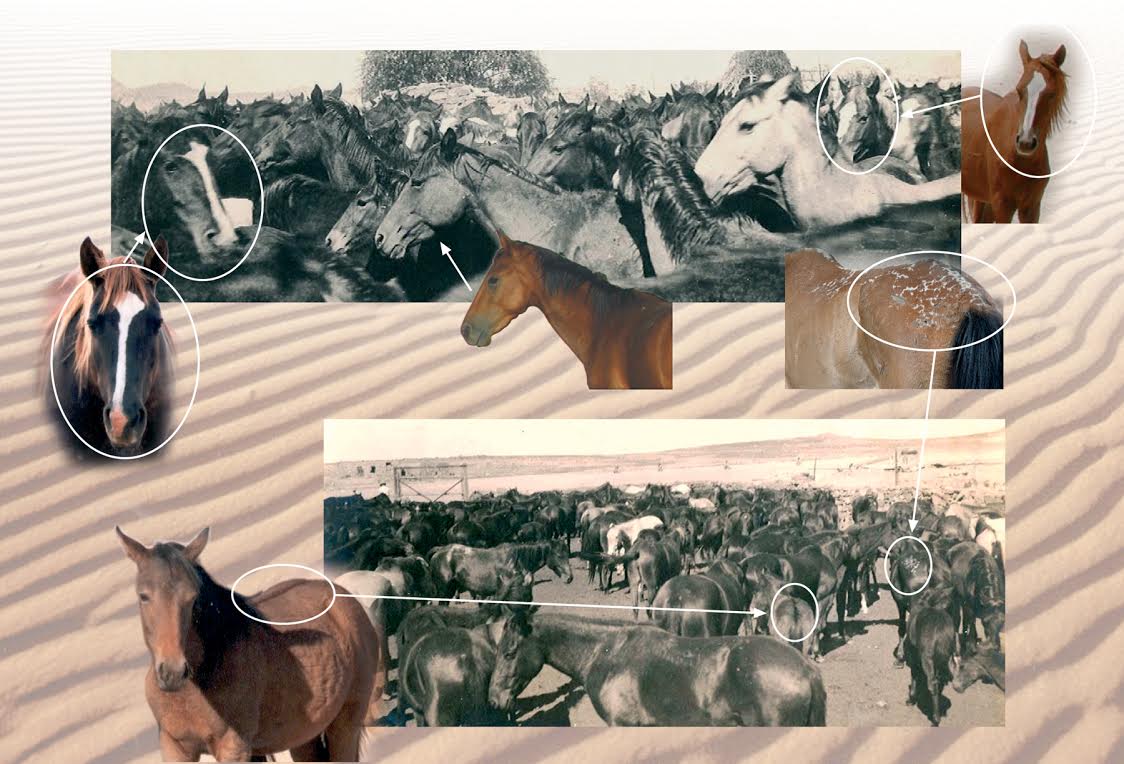
Corresponding characteristics. The pictures of the Kreplin Stud (source: private collection Walter Rusch, Windhoek) were taken 90 years before those of the Wild Horses (Telané Greyling.
|
It is probably thanks to the diamond finds at the coast that the horses were not caught again. As early as 1908 the German colonial administration established restricted areas which extended about 100 km inland and were strictly controlled. The surroundings of Garub were part of Sperrgebiet II. Nobody was allowed access, with no exception made for hunters or horsecatchers either. Garub with its borehole and the drinking trough, which was set up later, became the pivotal point in the horses’ existence. |
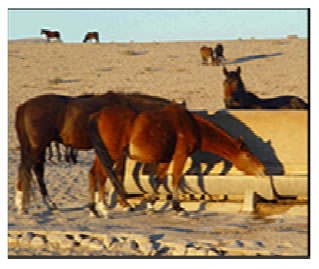 The drinking trough at Garub. Photo: Telané Greyling. |
Since the feral horses were able to develop in almost complete isolation for 90 years they may now be regarded as a breed in their own right, the 'Namibs'.
In 1986 the Restricted Area II was declared open and annexed to Namib Naukluft Park. After Namibia became independent in 1990, tourism increased in leaps and bounds. A shelter was erected at the drinking trough at Garub to give visitors the opportunity to watch the Wild Horses.





